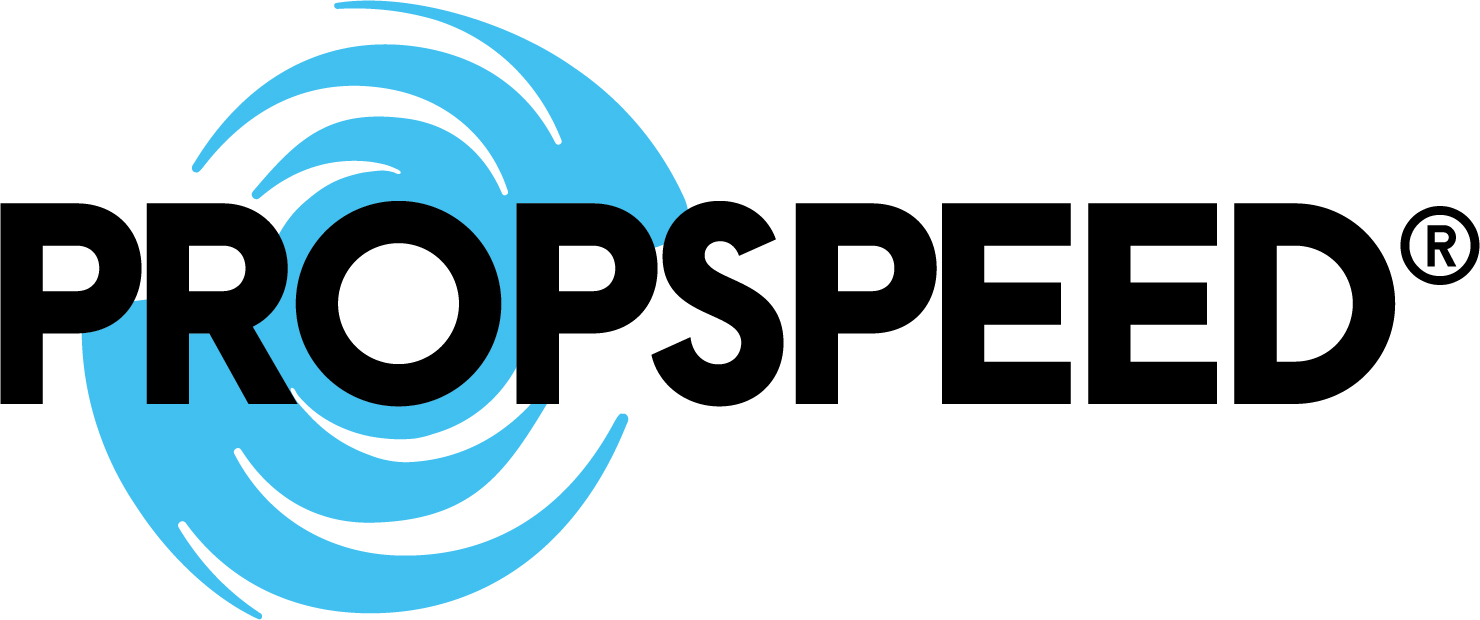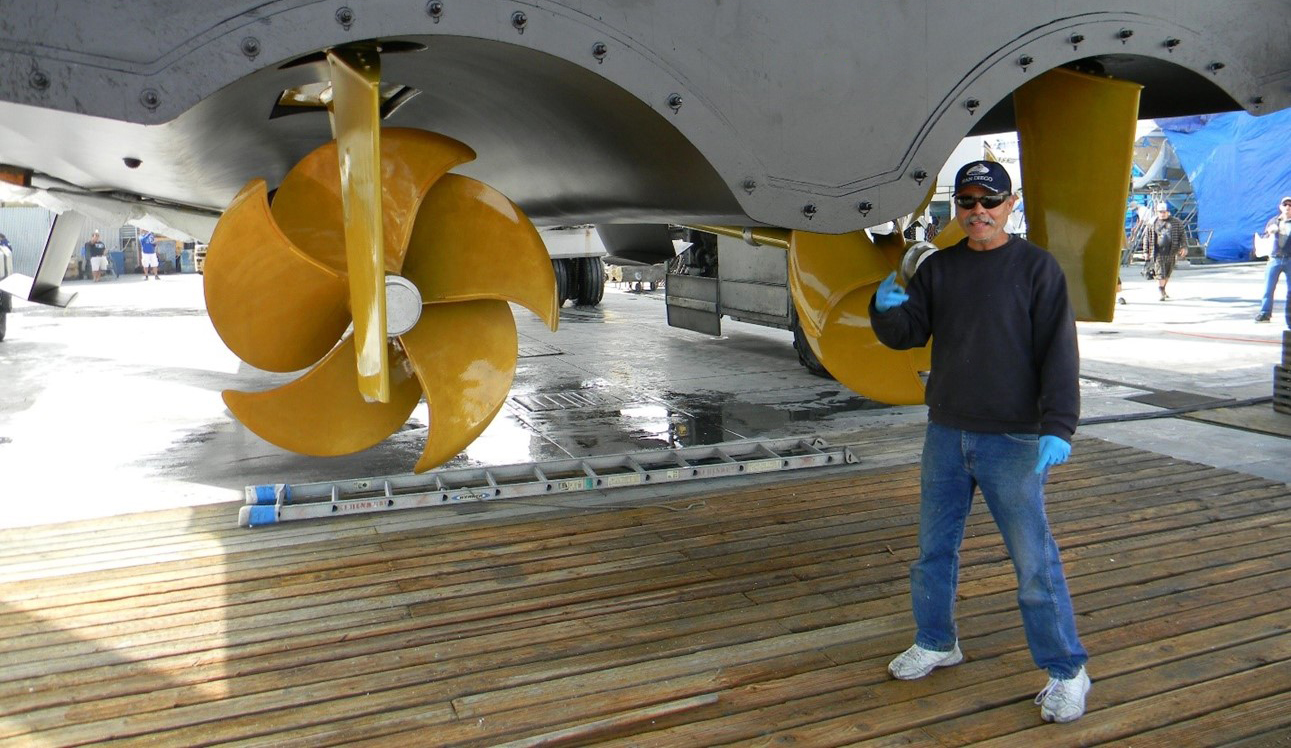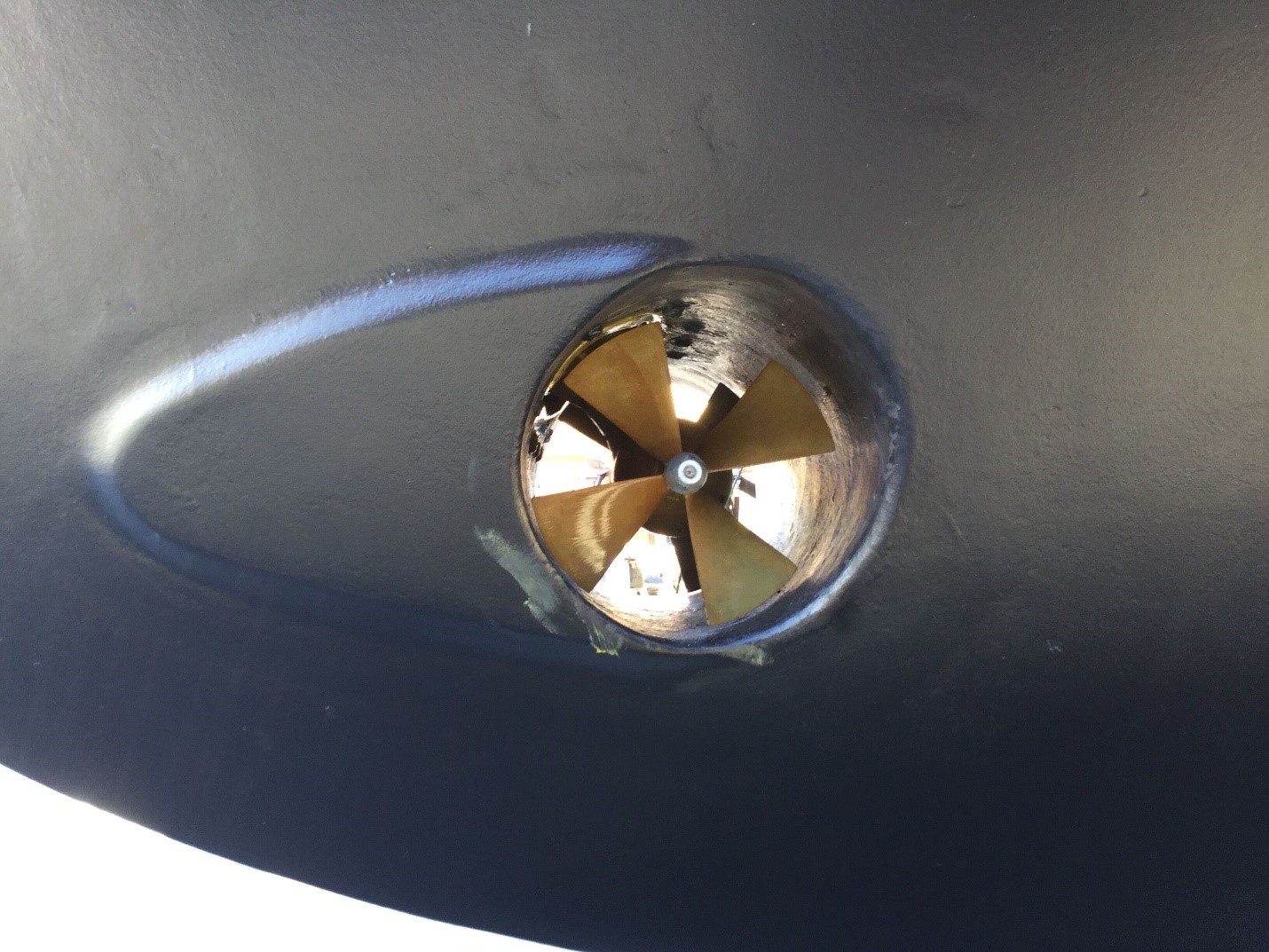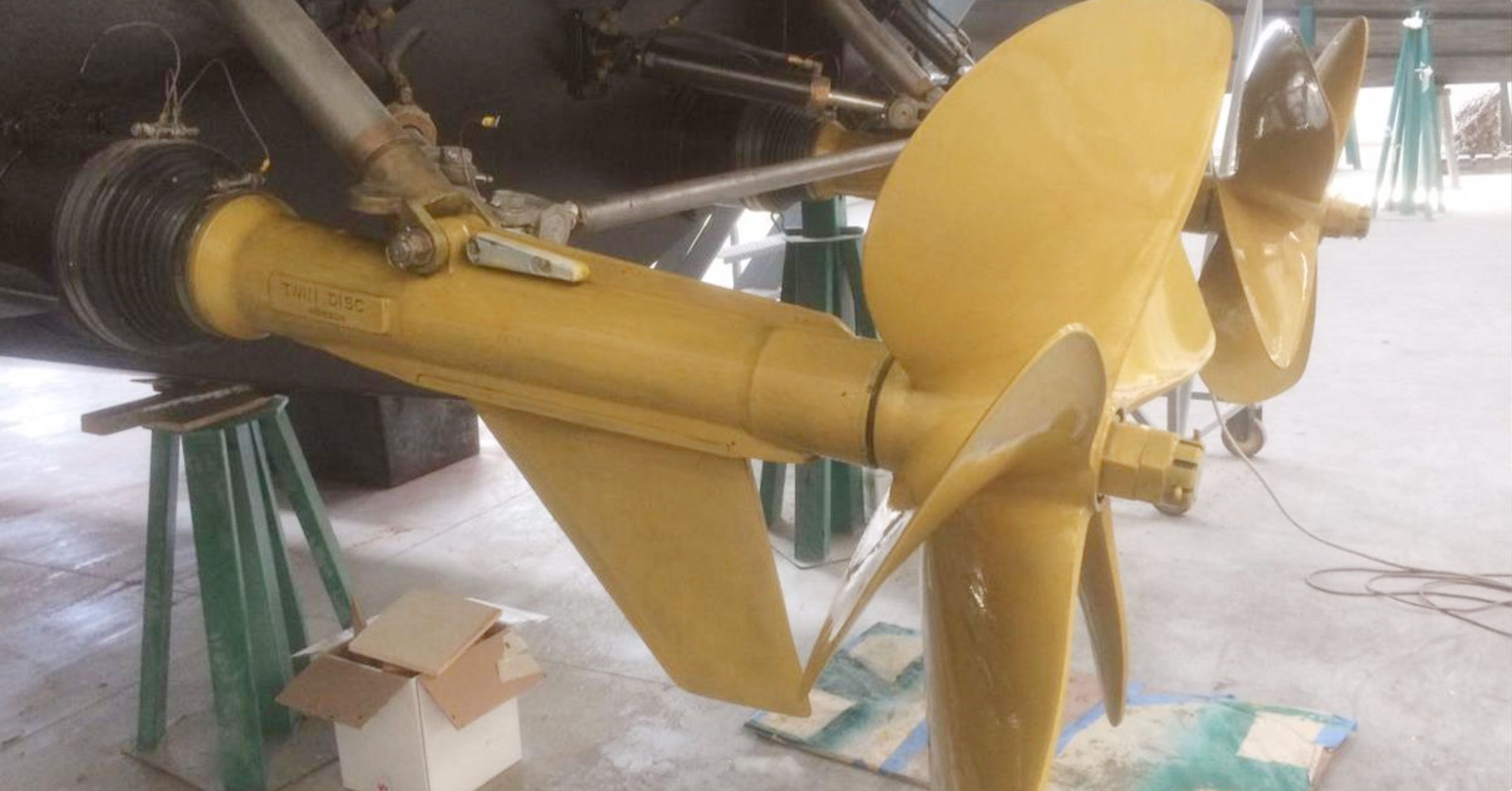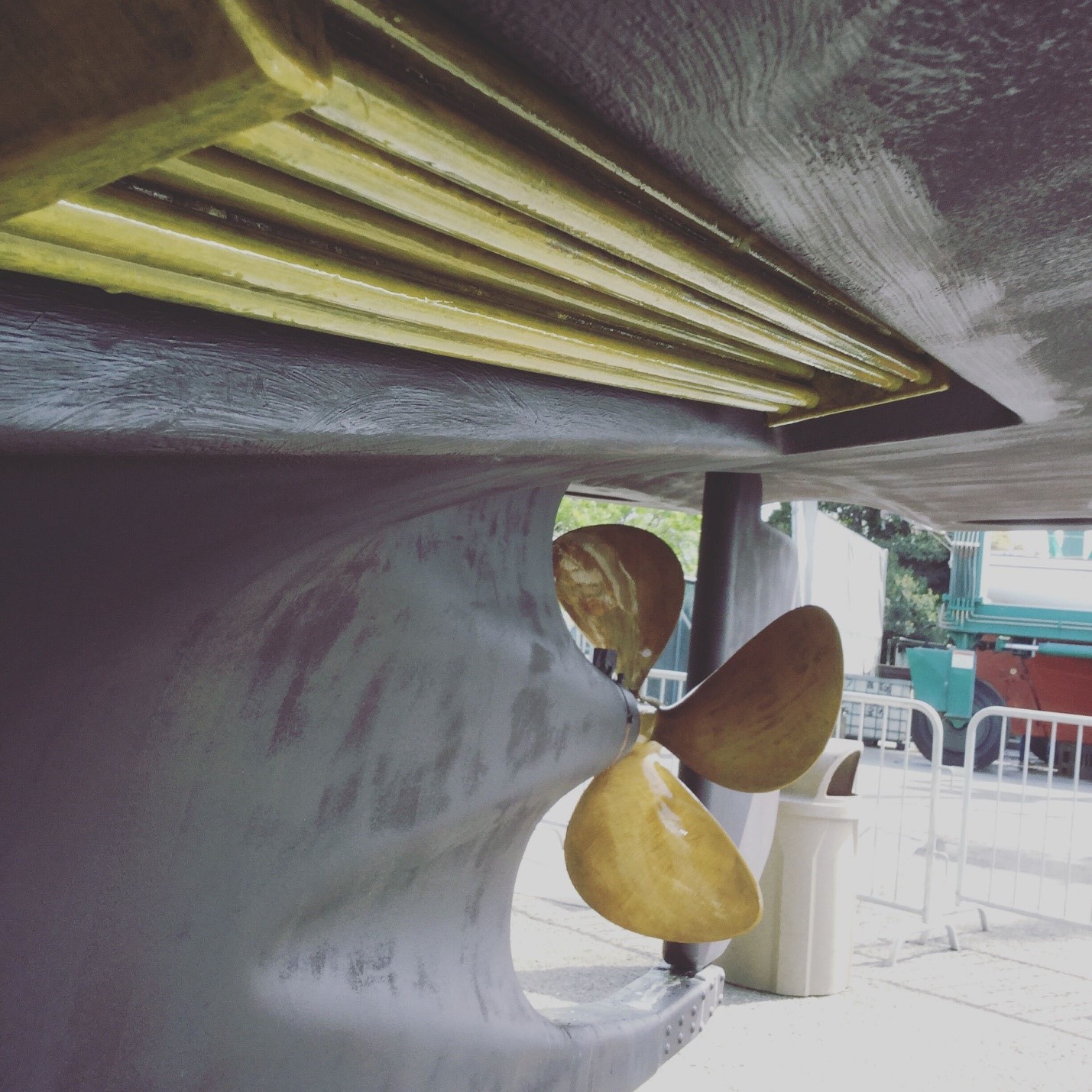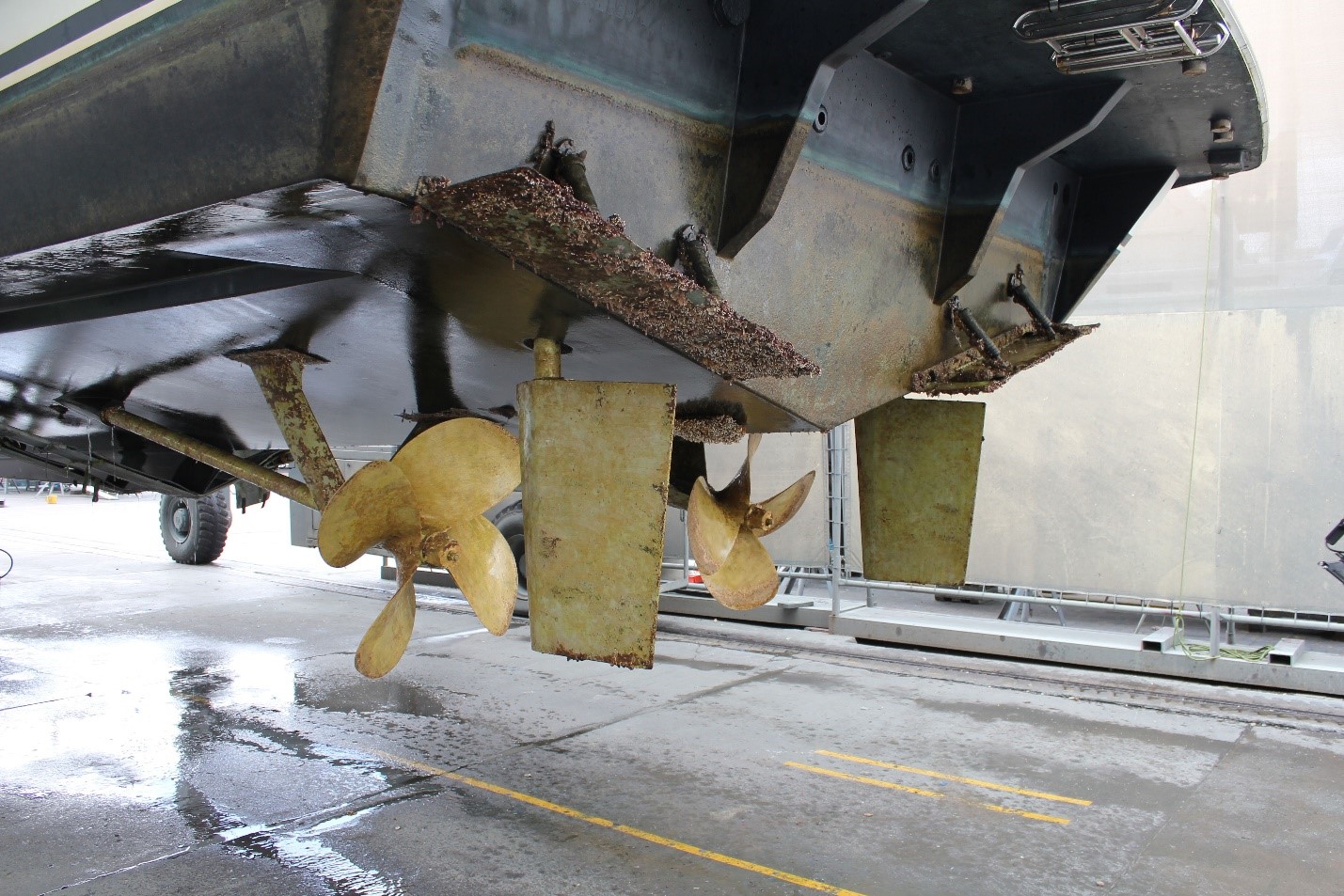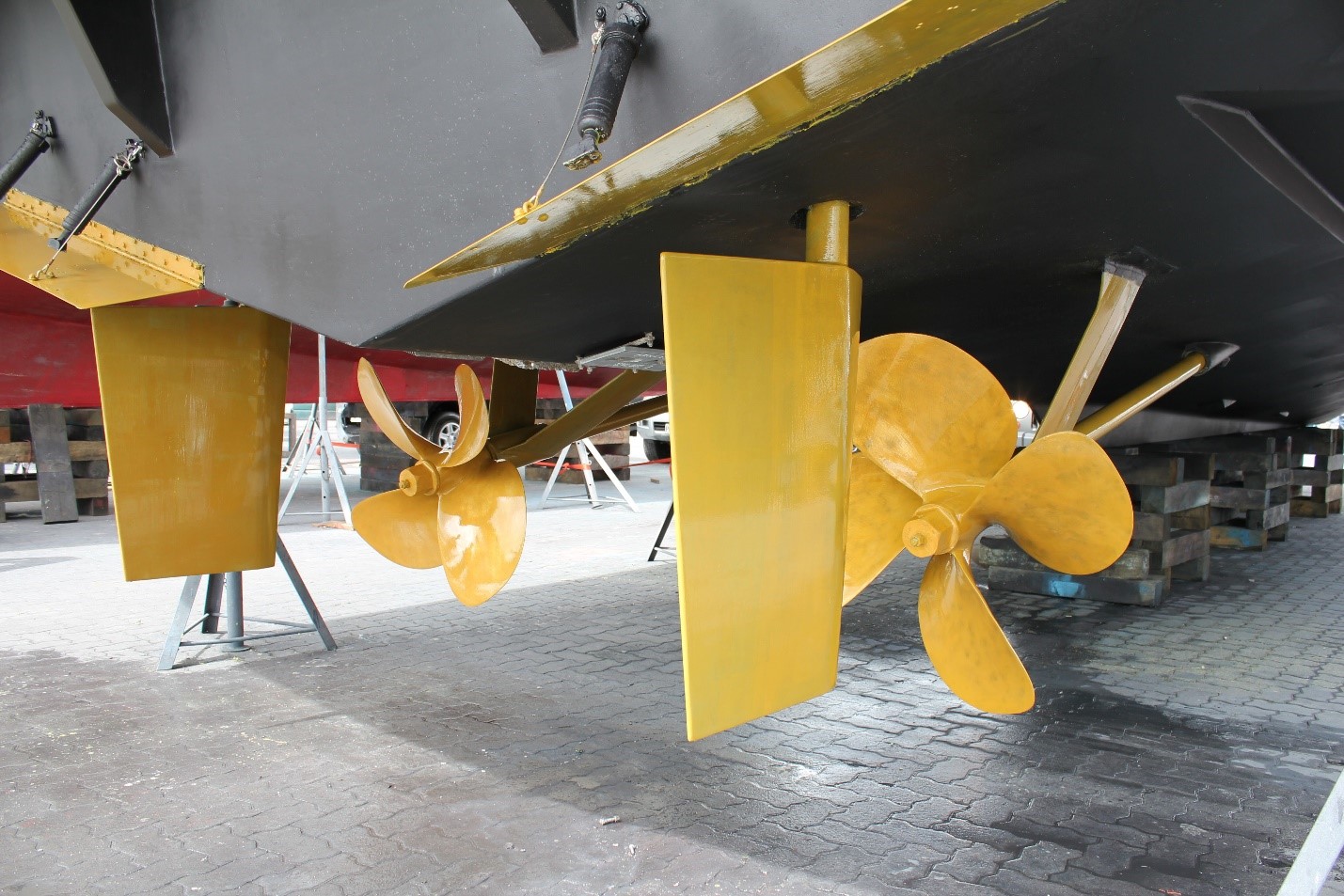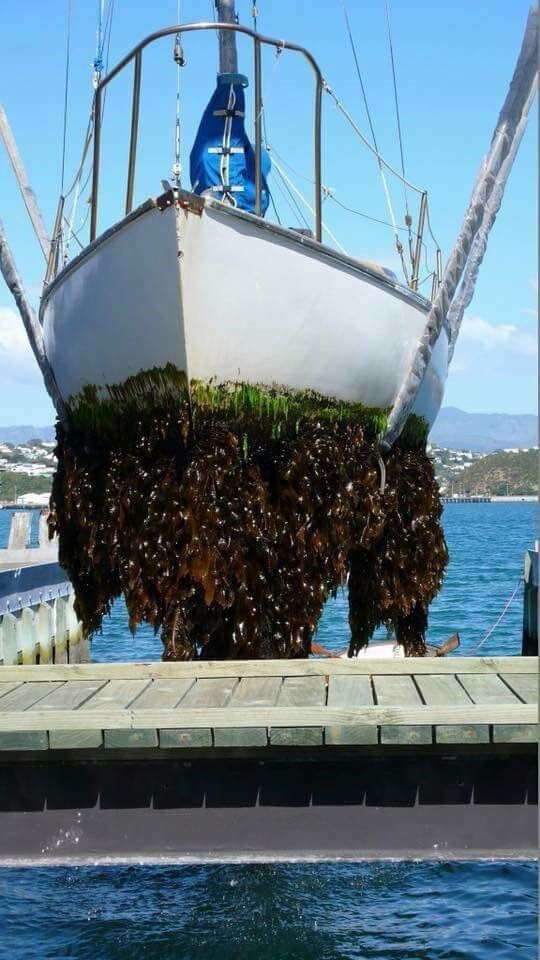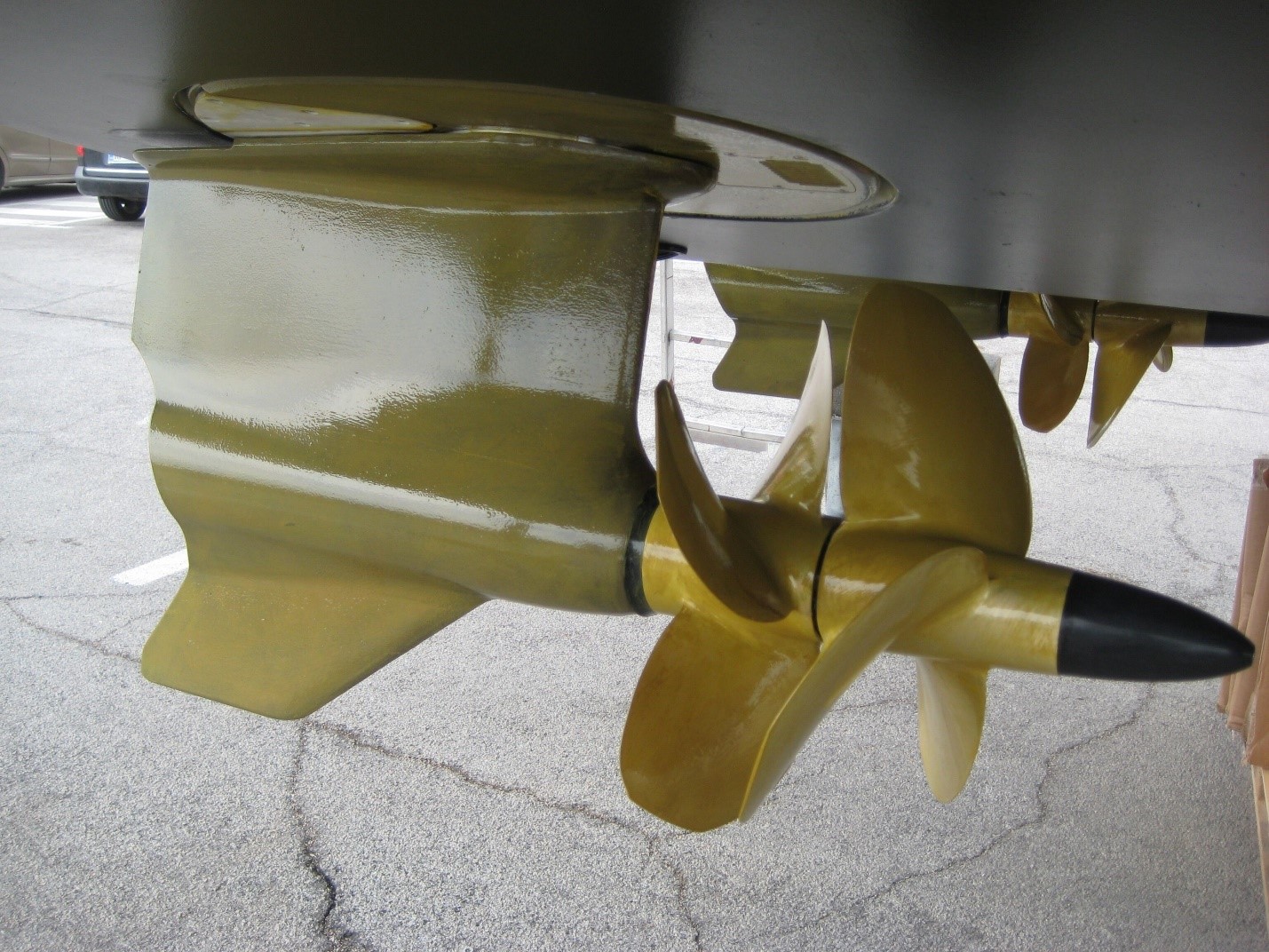Propspeed
Propspeed is a coating for propellers and metal running gear as an alternative to anti-fouling (toxic) paint. It can be applied to any metal part below the waterline, including propellers, shafts, struts, rudders, trim tabs, stabilizers, sea chests, keel coolers, bow and stern thrusters, pod drives, sail drives and other underwater metal.
Captain's Report by Capt. Peter d’Anjou
Mission
Propspeed was developed by Guy Jacobsen, a sportfish enthusiast from New Zealand who happened to own a paint company and sought a solution to keep the running gear on his boat clean. – Boat Owners Warehouse
Oceanmax, the maker of Propspeed, is dedicated to discovering and developing high performance products that make marine craft more efficient to run and economical to maintain.
Key Features
- Reduces marine growth on metal below the waterline
- Non-toxic to marine life
- Improves speed and fuel efficiency
- Longer sacrificial anode life
Distinguishing Features
- Chemically bonds to metal
Propspeed is a foul-release coating, not an anti-foulant, so it doesn’t harm marine life. The topcoat on the Propspeed system is an ultra-slick surface that marine growth finds difficult to hang on to. Propspeed’s effectiveness does depend on movement of the boat - the more one uses it, the better Propspeed performs.
Design
Propspeed features an exceptionally strong chemical and mechanical bond between the metal substrate, the Etching Primer and the Clear Coat–ensuring that the Propspeed coating actually sticks to your running gear and performs season after season. Proper cleaning and surface prep with Propclean and Propprep are essentially before the Etching Primer can chemically bond with the metal substrate and provide both a chemical and mechanical bond for the ultra-slick Clear Coat.
Comparison
Propspeed sets itself apart from the competition with the exceptionally strong, long-lasting adhesion to metals from the chemical and mechanical bonds formed between the metal substrate, Etching Primer, and Clear Coat–this ensures that the Propspeed coating actually sticks to your running gear.
Inspection
Our preliminary research shows there are lots of variables as to how effective the Propspeed coating is, starting with proper application, temperature, frequency of boat movement/speed, and maintaining a clean surface without scratches that disrupts the clear coat - i.e. don’t let a diver use anything more aggressive than a soft cloth to wipe the props and expect the coating to stay intact.
Vessels being hauled for extended time on the hard does not affect Propspeed. Conversely, anti-fouling paint loses effectiveness with exposure.
Why not use anti-fouling paint on everything? Well, first it is toxic to marine life with long term impact on humans and second, anti-fouling paints are designed to slough off so new toxins are constantly released. This might work for hulls moving slowly through the water, but on high speed props, paint simply burns off - so Propspeed is the answer. On other underwater metals like skegs and rudders, the decision between coating with Propspeed versus anti-fouling paint should be based on the boater’s cycle of use.
A rule of thumb should be that if one is not getting four to five hours of runtime every three weeks in a warm climate like Florida, that is prone to excessive marine growth, then maybe you are better off with anti-fouling paint on other underwater gear, or one should employ a diver to help maintain the bottom. Propspeed is certainly easier for a diver to clean than a painted surface. Propspeed was designed for props and shafts and it seems to work on other underwater metals provided the cycle of use fits an active profile.
A physical solution to prevent marine growth does seem to be superior to a toxic paint solution, but again there are a lot of variables and tradeoffs in maintenance and costs.
Equipment Discussion
Propspeed makes a range of products to support Propspeed’s application: Propclean (denatured alcohol) and Propprep (phosphoric acid) wipes for surface prep.
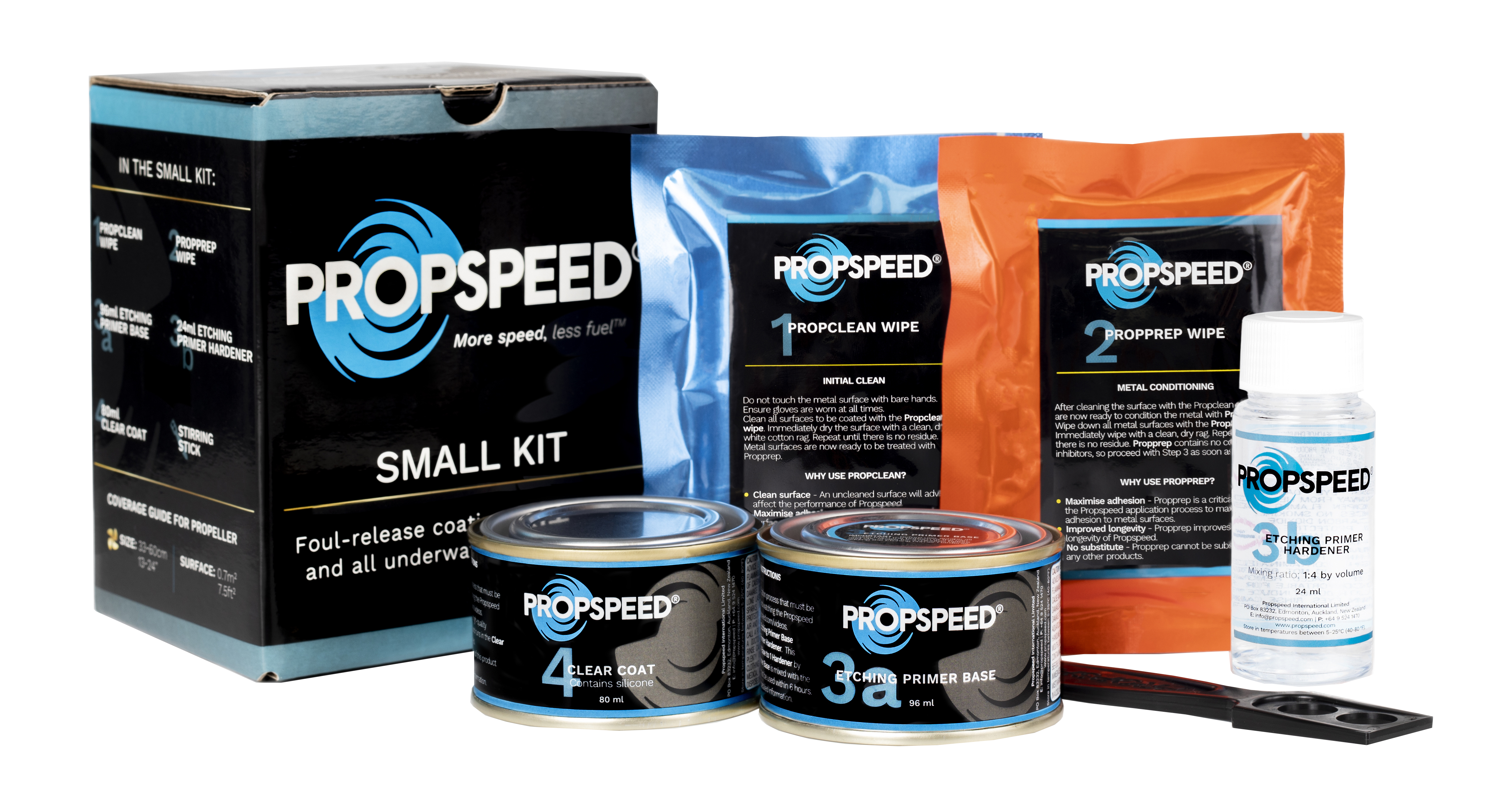
Price
Propspeed is available in a Small Kit– which will coat a surface of approximately 0.7ft2, a Medium Kit – which will coat a surface of 18.3ft2, and a Large Kit – which will coat a surface of 36.6ft2.
- Small Kit ($299.99)
- Medium Kit ($399.99)
- Large Kit ($529.99)
Propspeed is initially more costly than toxic anti-fouling paints, but long term more cost-effective, as it is said to last an average of one to two years and positively affects fuel consumption (we’ll report on this with our challenge report). It also increases sacrificial anode life.
The longevity before recoating is a cost consideration and is, again, dependent on location, temperature, and use. We have heard reports out of Massachusetts that say an active sportfish got four years out of an application while boaters in Florida might expect 18 months.
Observations
Propspeed, due to cost, is best applied by an experienced professional, because simply put, you can’t afford to mess up and redo the application. But for a DIY individual who can follow detailed instructions, it is really not rocket science to apply.
The key to application is both mechanical bonding (sanding) and the use of Propprep (a phosphoric acid with additives) that leaves a surface matrix residue for the zinc chromate polymer etch primer to chemically bond to the metal substrate. Hydrogen gas released by this process ensures that the clear coat actually penetrates and chemically adheres to the primer layer as well, and doesn’t just sit on top. All three layers add corrosion resistance. There is a little more science involved but rest assured, it all works toward a stronger bond and results in a slippery surface easily washed by hydrodynamic pressure.
